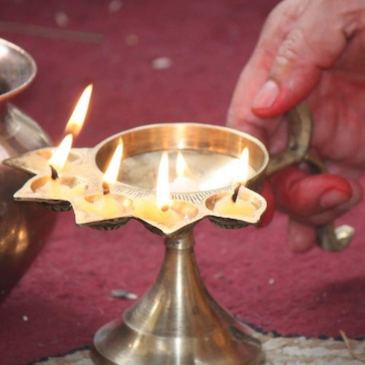In Hindu society, the term gotra means clan. It broadly refers to people who are descendants in an unbroken male line from a common male ancestor. However, all families having same gotra need not be cousins. Based on our ancient scriptures people’s castes (Brahmin, Kshatriya Vaishya, Shudra) were never determined based on lineage instead was based on the person’s abilities. That said this system of Gotras were started as a way of identifying one’s lineage from the 8 great Rishi’s of Sanatan Dharma. They can be descendants of sons or disciples or even adopted sons of the Rishi, who is the root and whose name is used as Gotra. For example, if a person says that he belongs to the Kashyap Gotra then it means that he traces back his male ancestry to the ancient Rishi Kashyap.
Gotra means cowshed (Go=Cow, tra=shed) in Sanskrit. Pāṇini defines gotra for grammatical purposes as apatyam pautraprabhrti gotram (IV. 1. 162), which means “the word gotra denotes the progeny (of a sage) beginning with the son’s son.”
The assumption that this system was started by Brahmins for Brahmins needs to be looked into deeper and to assume that this system with a purpose to classify and identify the families in their own communities not amongst other castes is erroneous. Even the Kshatriya, Vaishya, Shudra all have own Gotras although many of them do not identify themselves. For examples the system of Gotras was probably forgotten amongst the Sri Lankans as they never mention this during their marriage ceremonies and priests often classify them under Shiv Gotra if one does not know their Gotras.
Hindu Brahmins identify their male lineage by considering themselves to be the descendants of the 8 great Rishis. So, the list of root Brahmin Gotras is as follows:
- Angirasa
- Atri
- Gautam
- Kashyapa
- Bhrigu
- Vasistha
- Kutsa
- Bharadwaja
The offspring of these eight are gotras and others than these are called gotrâvayava. These eight sages are called gotrakarins from whom all the 49 gotras (especially of the Brahmins) have evolved. For instance, from Atri sprang the Atreya and Gavisthiras gotras.
In almost all Hindu families, marriage within the same gotra is prohibited since people with same gotra are considered to be siblings. There are medical reasons for this, and this will be addressed in my next article.
Gotra is always passed on from father to children among most Hindus, just like last name(surname) is passed on worldwide. However, among Malayali’s and Tulu’s it is passed on from mother to children. Additional rule in the Gotra system is that, even if the Bride and Bridegroom belong to different Gotras, they still cannot get married even if just one of their Gotra Pravara matches.
Keep in mind the Gotra is a lineage, akin to a family name, but the given name of a family is often different from its gotra, and may reflect the traditional occupation, place of residence or other important family characteristic rather than the lineage. People belonging to a particular gotra may not be of the same caste in the Hindu social system. People of the same gotra are generally not allowed to marry. At weddings, the gotras of the bride and the groom are read aloud to verify that they are not breaking this rule.
Relevance of Gotra’s: The reason why these Gotra’s become more important for all of us is its deeper medical reasons why this needs to be followed. One must acknowledge the depths to which our Ancient Rishi’s have studied this system.
In my next article I would like to address the medical reasons why the Gotra classifications need to be followed especially during marriage.
About the author…
Compiled from various sources by Niranjan Kamath

